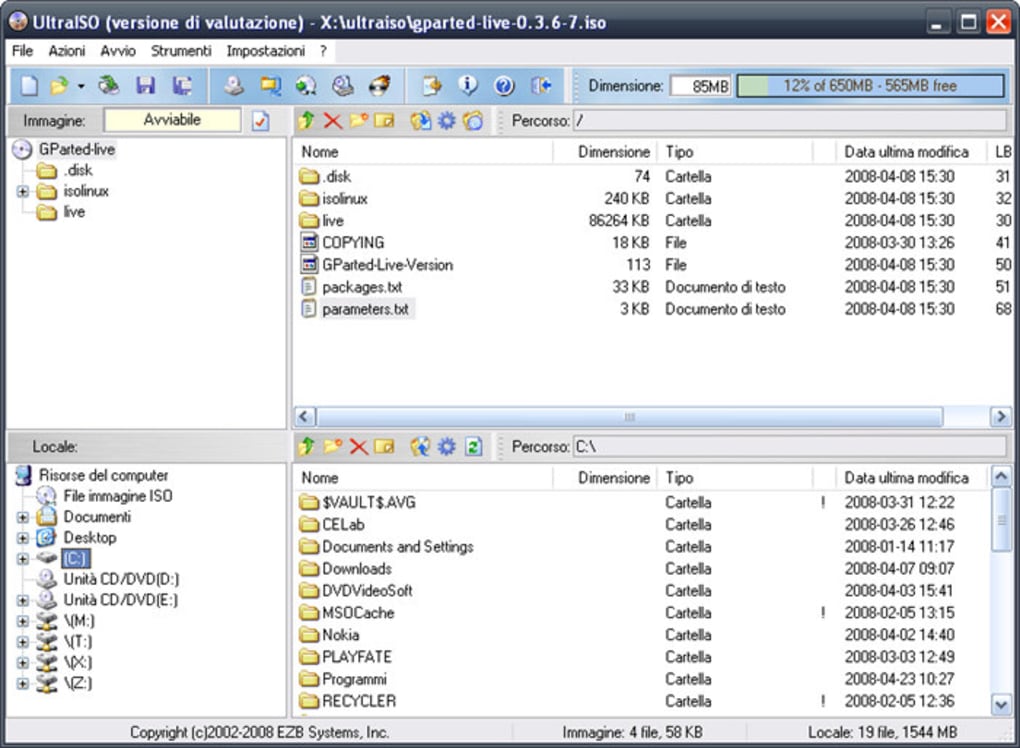
- FAST DISK IMAGE CREATOR INSTALL
- FAST DISK IMAGE CREATOR DRIVERS
- FAST DISK IMAGE CREATOR SOFTWARE
- FAST DISK IMAGE CREATOR ISO
- FAST DISK IMAGE CREATOR WINDOWS 7
Values that were changed include the last mount time, last write time, mount countĪnd a byte at location 0x0178 within the superblock. It is possible the first superblock (typically offset 1024 within the partition) on the ext2/3/4 filesystem the drive may be altered. During internal testing it was found that if the evidence drive is connected during system start up, Issue: OSFClone may not be forensically sound when imaging drives with ext2/3/4 filesystems.

Solution: User may need to go into their BIOS and switch the Boot Mode from Unified Extensible Firmware Interface (UEFI) to Compatibility Support Mode (CSM) on their system. Issue: OSFClone may be unable to boot on some UEFI enabled computer systems.
FAST DISK IMAGE CREATOR INSTALL
FAST DISK IMAGE CREATOR WINDOWS 7
Users with Windows 7 and a CD/DVD writer can natively transfer*.iso images to CDs or DVDs. To run OSFClone, download and burn the osfclone.iso image to a CD or DVD, and choose to boot from the CD/DVD drive during system start up.

FAST DISK IMAGE CREATOR SOFTWARE
To install OSFClone to a CD or DVD, you will need a CD/DVD writer and CD/DVD image writing software of your choosing. When integrity is of the utmost importance, we recommend using a write blocker in conjunction with OSFClone.
FAST DISK IMAGE CREATOR DRIVERS
However due to different hardware, drivers variations and disk states, there could be a small chance of contamination, especially when the source drive is from a Linux / Unix machine. OSFClone does its best not to leave artifacts or alter the source evidence drive.
FAST DISK IMAGE CREATOR ISO
Previous Version: OSFClone v ISO (49.5MB) ZIP (54.3MB) Installation Instructions DownloadĬlick to download the OSFClone zip (373 MB) Use OSFClone to save forensic meta-data (such as case number, evidence number, examiner name, description and checksum) for cloned or created images.

After image creation, you can choose from a range of compression options to reduce the size of the newly created image, increasing portability and saving disk space. Verify that a disk clone is identical to the source drive, by using OSFClone to compare the MD5 or SHA1 hash between the clone and the source drive. The dc3dd format is ideal for computer forensics due to its increased level of reporting for progress and errors, and ability to hash files on-the-fly. OSFClone can create disk images in the dc3dd format. Boot into OSFClone and create disk clones of FAT, NTFS and USB-connected drives! OSFClone can be booted from CD/DVD drives, or from USB flash drives. OSFClone creates a forensic image of a disk, preserving any unused sectors, slack space, file fragmentation and undeleted file records from the original hard disk. After creating or cloning a disk image, you can mount the image with PassMark OSFMount before conducting analysis with PassMark OSForensics™. An open standard enables investigators to quickly and efficiently use their preferred tools for drive analysis. In addition to raw disk images, OSFClone also supports imaging drives to the open Advance Forensics Format (AFF), AFF is an open and extensible format to store disk images and associated metadata, and Expert Witness Compression Format (EWF).

OSFClone is a free, self-booting solution which enables you to create or clone exact raw disk images quickly and independent of the installed operating system.


 0 kommentar(er)
0 kommentar(er)
